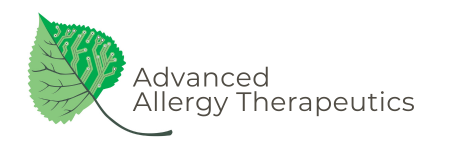AAT Assessment Method
AAT’S SPECIALIZED ASSESSMENT IDENTIFIES DEFENSIVE RESPONSES
It is essential to identify substances contributing to stress on the body to determine the root cause of a patient’s symptoms. AAT achieves this by using a biofeedback technique to measure the body’s stress responses.
The AAT treatment uses a dedicated and specialized stress assessment method, a refined Muscle Response Test (MRT), which enables practitioners to determine whether any system in the body is responding defensively to a specific substance. AAT’s unique 4-step proprietary testing technique significantly enhances accuracy for practitioners and ensures consistent results. When performed correctly, stress testing (MRT) is a highly effective tool for quickly identifying substances that cause stress on the body.
The AAT Stress Assessment (MRT) is completely painless and conducted in person. The practitioner applies a digital signal representing the substance being tested directly to the client’s skin using a dedicated AAT treatment cuff. The practitioner can then assess the presence or absence of defensive responses in target muscle groups. The skin and muscles are assessed because they are innervated by the sympathetic nervous system, which serves as the body’s primary defense mechanism.

When a harmless substance is perceived as a threat, the muscle momentarily freezes, followed by an immediate fight-or-flight response. During this brief window, an AAT practitioner can assess the change in muscle reaction and evaluate whether the stimulus is perceived as a threat based on the test results. If harmless substances like chocolate, pollen, or soy trigger a defensive response in the muscles, the body is misinterpreting the harmless substances as threats, causing the muscles to weaken. Immediately after completing an AAT treatment, the practitioner can reassess the muscle’s response to determine whether the body has returned to an appropriate reaction to the previously misinterpreted substance. The change in the body’s perception of the substance is immediate.
AAT teaches this enhanced biofeedback technique to practitioners learning the AAT therapy; however, practitioners may also use their own biofeedback methods.
THE IMPORTANCE OF MUSCLE TESTING WITH AAT
Muscle Response Testing (MRT) is a widely used technique in alternative medicine for assessing a patient’s reactions to various substances, though it can be subjective. While muscle testing lacks scientific validation, it has been effectively used for decades.
Conventional tests, such as RAST or skin prick tests, have their limitations and may not accurately identify the true causes of many allergic reactions. These tests can produce false negatives or positives, as they typically measure a single marker (like IgE or histamine) or evaluate just one protein to represent the entire substance to which a patient may react. Furthermore, conventional allergy tests often do not effectively assess sensitivities.
Proper muscle testing has proven invaluable for identifying the underlying causes of a patient’s symptoms, and AAT utilizes it as its primary testing method. AAT represents a biological communication technology; currently, no other instrumentation can match its accuracy in communicating with the body through precise muscle testing. Detecting inappropriate reactions can be particularly challenging due to their complexity. While some available instruments can identify basic substances contributing to symptoms, AAT surpasses these capabilities. Expertise and subtlety in communicating with the body are crucial for effectively identifying all perceived threats.
AAT teaches a proprietary four-step muscle testing method, known as the AAT Stress Test, which significantly minimizes subjectivity. Developed over several years in response to inconsistencies in testing results among 30 to 50 practitioners treating patients in our own clinics, this method identifies specific dynamics essential for achieving consistent and accurate muscle testing results. Once all of our practitioners were retrained in this new method, their skills were calibrated, fostering tremendous confidence and accuracy. We incorporate this proprietary testing method into the AAT training and further refine it during One-on-One sessions to enhance its effectiveness for each new practitioner.
What is AAT
The AAT Method
AAT - An Integrative Medicine
AAT Expert System
AAT Assessment Method
AAT Digital Signals
What is an Allergy
Allergies vs Sensitivities
Adapting to Our Modern World
FAQ

© 2005-2025 AAT Business Development Group, LLC | All Rights Reserved | Website by Dion Design Group
